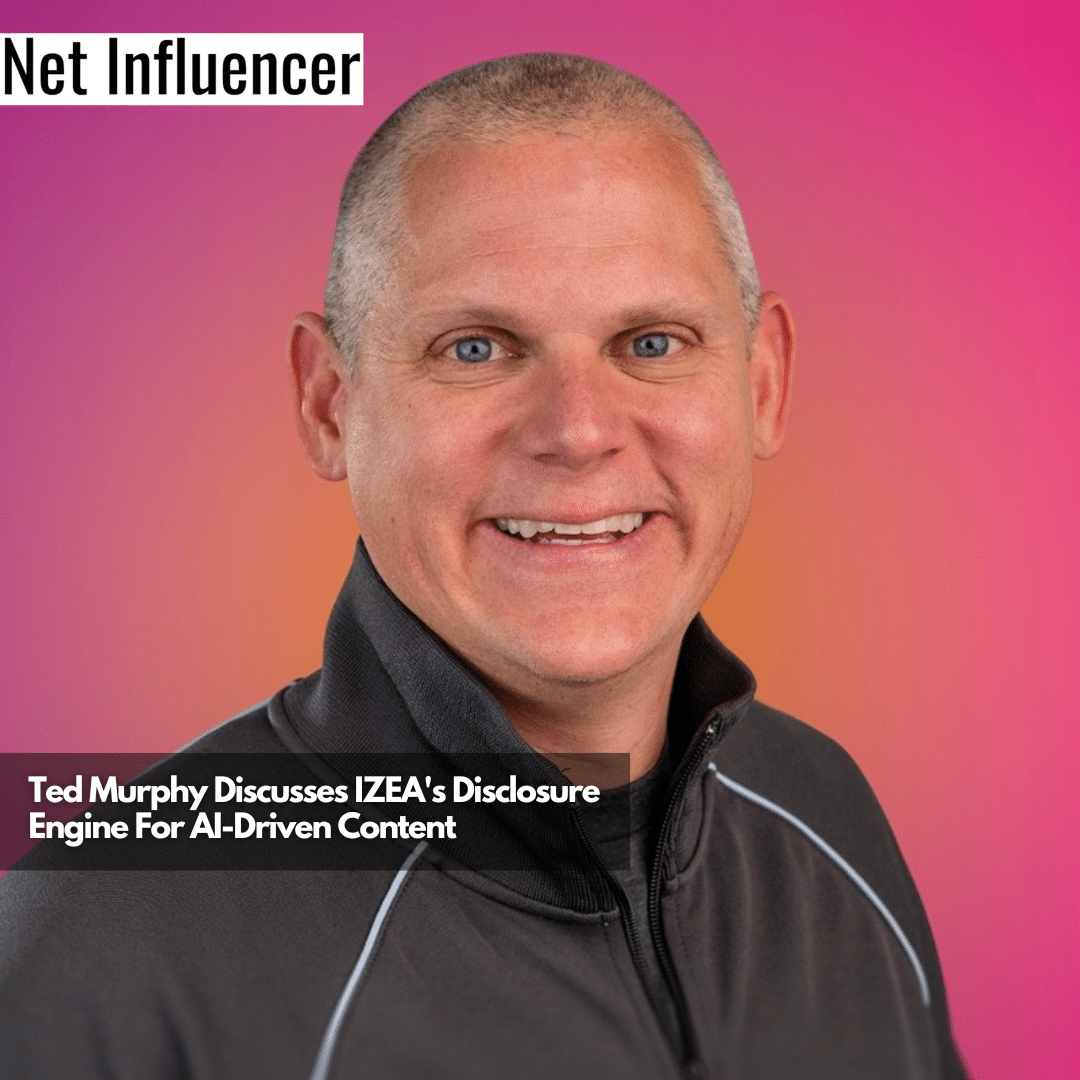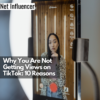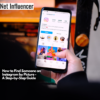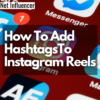Technology
Ted Murphy Discusses IZEA’s Disclosure Engine For AI-Driven Content
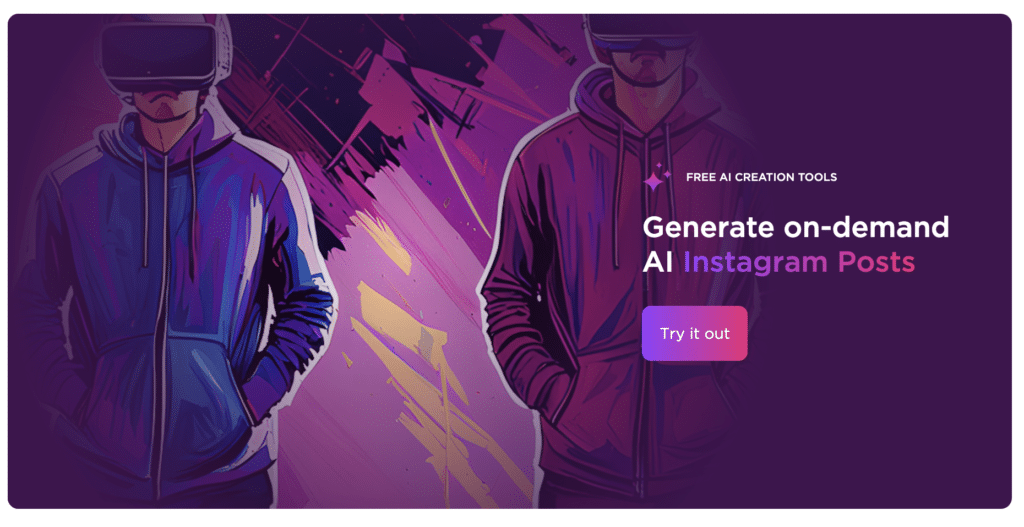
Ted Murphy is the founder and CEO of IZEA. He started the company 17 years ago, and it was originally launched under the name payperpost.com. The company was the first influencer marketing platform and was paying bloggers to create blog content for brands then.
They’ve focused on the same service going from platform to platform as they’ve grown. But today, they’re more focused on all forms of social media. They have a managed services offering where they execute campaigns for clients. They also have multiple software platforms where people can find and hire influencers and manage their influencer marketing campaigns.
You’ve recently announced the development of the industry’s first disclosure engine for generative AI content. Can you explain what prompted IZEA to embark on this project?
In the beginning, back when IZEA was still payperpost.com, there were no standards around endorsements on social media. In fact, when payperpost.com was launched, there was a lot of controversy around sponsored content and the idea of paying people to create content for brands.
As the conversation evolved, Ted decided that the industry needed some sort of standard policy, so they created the first disclosure policy back in the day. After, they started rolling out sponsored tweets, created a disclosure engine for Twitter, and worked with the FTC to create the overall guidelines for sponsorships and social media.
“Disclosure, transparency, and authenticity have always been the heart of what we do,” Ted says. He believes it’s crucial to maintain the credibility of both the brands and creators who are participating in influencer marketing campaigns.
And as artificial intelligence starts being used more for all sorts of different applications, Ted felt the need to have some form of disclosure in AI-generated content, especially if there is potential confusion on the source of the content.
Unfortunately, the legislation hasn’t caught up yet. Technology is evolving so quickly that it’s challenging for regulatory bodies to keep up with the pace of innovation. “But we decided that we were going to lead the way and create a standard of our own that we would use,” Ted says.
With this disclosure set in place, it’s now very easy for IZEA to disclose where the content is generated through AI or a traditional creator.
How does this disclosure engine work, and how will it help ensure transparency in AI-generated content?
The disclosure engine is straightforward to use. When someone generates an image in the platform and clicks the AI disclosure, a watermark will appear when they download an image, indicating that the image is AI-generated.
How do you think the tool will impact the interaction between brands and influencers and between influencers and their audiences?
For Ted, it remains to be seen. He recognizes that AI is now being used widely in various forms of media — movies, TV shows, and even TikTok videos — and yet it’s not fully disclosed that they’re created using AI.
“There’s also a whole other question, like, what should be disclosed,” Ted says. Today, artificially created media is present almost everywhere, and there’s no disclosure for any of those things. People could watch an entire TV show and movie without knowing that the entire medium is generated by AI.
Could you explain a bit more about the new AI content creation tools to be offered on IZEA.com? What can users expect from these tools?
IZEA currently aims to make it easier for people to ideate and create. “We are not necessarily saying that AI is a replacement for creators. But we are saying it’s a fantastic tool just as Photoshop, Illustrator, and Aftereffects are,” Ted adds.
IZEA wants to make it easy and accessible for everyone to use these types of tools. Part of what they’ve done is take out the complexity of most image generators where people have to think like a prompt engineer to learn how to use those tools and make the most out of them. They’ve also optimized their tools for social media content.
Instead of people using ChatGPT and typing in different prompts to get the content they want, they can use IZEA’s AI content creation tools and go through presets, which they can mash several tools together.
Their goal is to become AI agnostic in the same way that they’re social platform agnostic. Their platform is friendly with Instagram, Twitter, YouTube, and TikTok in the same way as their AI tools. They’re planning to integrate all these different tools and make them part of a toolbox for creators so they get the best of each tool all in one place.
As IZEA’s new tool will visibly watermark AI-generated images and tag AI-generated text with disclosures, how do you anticipate this will impact the aesthetic or appeal of the content generated?
For now, Ted doesn’t know yet. Looking back at what happened in the influencer space, a lot of people said that when influencers start to disclose that the content was sponsored, nobody would ever interact with the content, and the content will not have any value.
But based on the size of the industry today, influencers disclosing that they’re getting paid and their content is sponsored doesn’t have a huge impact. Bad content is still bad content, and good content is good content.
For instance, the Super Bowl. People will tune into the commercials and ads, and if they’re done right or creative enough, it doesn’t matter if they’re sponsored or not. Ted expects to see the same thing happening in terms of AI content, where people wouldn’t care too much whether the content they’re seeing is made by AI or by an actual human being.
And to the extent that it should be disclosed because there could be some confusion about the source of it, then it should be. “But I don’t think that just because something is created by a machine means that it’s going to be valued any less than something created by humans,” Ted explains.
With this tool, do you foresee any challenges regarding the balance between authenticity and AI-generated content in influencer marketing?
Ted doesn’t see any challenges but actually expects these tools will become catalysts for a real creative revolution. Thanks to IZEA’s new offerings, people will have access to tools that they never had any access to before. In some ways, Ted thinks that AI can actually push people to become better creators and creatives as this tech sets a new bar.
How will IZEA address potential concerns that users may have about the use of AI in content creation, particularly around issues of authenticity?
“I think we have a unique position here where we can get people thinking about transparency and disclosure. No other AI tool has anything like this built into it,” Ted says.
By putting the tool as an option for use, people will think about what’s the right thing to do — should they disclose how much of their content is actually made by them or the machines?
But at the same time, times are still uncertain in terms of how well the tools go and what the level of adoption is. It’s basically the same thing as what happened during the early days of influencer marketing. Back then, the biggest influencers who had huge followings on platforms didn’t want to touch sponsorships because they thought that by doing that, they were selling out as social media was so pure, and no ads were being served on any platforms at that time.
Looking at the industry now, everything is different. If an influencer gets paid millions of dollars by a sponsor, they’re not a sellout anymore. “I think we’re going to see the same thing here. A new disruptive idea comes around, and there will be people who will push back,” Ted says.
IZEA has a history of pioneering disruptive content practices. Can you talk more about IZEA’s approach to innovation and how this new tool fits into that approach?
Ted has always had a focus on trying t move fast, take risks, and be open to the unknown. Their latest offering is one of their biggest leaps to date, and he couldn’t be more excited.
But Ted firmly believes it’s essential to move quickly in this space because everything changes constantly. “We’re here talking about creative disruption in terms of the way that content is being produced. And then, if you think about the other side of our business, we have all the platforms at constant war with each other as ad formats constantly change,” he adds.
As such, Ted aims to move very quickly in response to the changes taking place in the space while getting new products into the hands of the creators and marketers. Some of those are going to work, and some won’t, but Ted isn’t afraid to take risks, stick his head, and try something new.
Looking at the bigger picture, what do you believe is the future of AI in influencer marketing, and how is IZEA positioning itself to lead in that space?
In the future, Ted expects to see more gens and non-gens. Gens are people who will really embrace generative AI, and non-gens are those who will try to stay pure or shy away from generative AI.
IZEA will not take the position of “AI is the future” or ask people to use their tools, but at the same time, they recognize that things will change pretty quickly in the influencer marketing space. Things aren’t going to move slowly as they did with the advent of influencer marketing; everything is at a different pace now.
“We are looking into a future where a creator will be able to upload an image of themselves and train a model, and brands will be able to upload their product images and train a model,” Ted explains further. At the end of the day, the influencer will simply prompt AI tools to generate an image of themselves, and they’re going to license that image off to that brand, and it’ll take them a few seconds to do all of that.
As a result, influencers can create more branded content quicker, give brands more creative ideas, and do things they could never do in the real world. And for Ted, this change will have a dramatic impact on pricing.
At some point, influencers’ pricing has to equalize ad start to grow at a reasonable rate each year. AI will play a significant role in the pricing in the influencer marketing space, which will benefit both the influencers and brands.
We know that you also launched The Creator Marketplace® on IZEA.com. Can you explain the motivation behind this? What gap in the influencer marketing industry are you hoping to address?
The Marketplace is focused on more traditional buyers. Most of the customers IZEA works with on the managed services side of their business are very large brands and agencies looking for a certain quality of creator. Their requirements have gotten more restricted and restrictive over time.
But there are so many creators out there who are just looking for opportunities to work with brands in whatever capacity possible. And there are a lot of smaller brands out there that just can’t afford to spend thousands or millions of dollars on a creator but would want to get their feet wet and start a campaign. The Marketplace is all about bridging those issues.
The Marketplace was created to help brands quickly search for creators, hire them for a transaction, and do it in a safe way. The platform basically acts as a safe that holds the money to make sure that creators do the work. They’ll pay the creator once the marketer says the work is done. Creators know they’re going to get paid, and the marketers know that the work is going to get done — it’s a safe environment for both parties and provides a way for marketers to recruit creators in the most cost-effective way possible.
The Marketplace has a casting call where marketers can have job listings, and influencers can raise their hands and say they’re a good fit for whatever the marketers are looking for. Marketers can pay creators in cash, gift cards, or hotel rooms.
“We cut ourselves purposely out of the entire transaction. Our goal here is not that we need to take money off each deal; it’s that we want the creator to be successful,” Ted says. They simply act as a connector between marketers and influencers, which is a win-win for everyone involved, including them.
Can you walk us through some of the revamped features for marketers and creators? How do they improve upon the existing platform?
On IZEA’s Marketplace, all the AI tools will launch next week, which will be massive. At the same time, they will also release AI tools inside of Flex, their enterprise platform. The platform has AI storyboards, creative briefs, and AI-concepting for influencer marketing campaigns.
They will announce another integration soon with a communication platform, making it easier to get various information together in one place. With this, marketers can see the whole relationship with the creators while also streamlining the workflow in a way that it offers opportunities to work within the platform and enable brands to solicit creators, get them onboard campaigns, do contract negotiations, and scale their programs.
The “Casting Calls” feature seems to be a novel addition. Can you explain the benefits of this feature for both creators and marketers?
The way Casting Calls work for marketers is they pay a monthly fee and will have the ability to post as many casting calls as they want. Those casting calls will be listed on the website, and creators can come in and pitch the brand for free. Creators can either do a video or text pitch and raise their hand and say, “Hey, I’m a good fit for this campaign,” and will state the reasons why.
When the marketers accept the pitch on the other side, IZEA will be completely cut out of the transaction. “We just provide them direct contact information with the creator. They can negotiate whatever deal they want with them,” Ted adds.
With this setup, marketers get to maximize the dollar they’re spending because they’re not paying the platform any sort of fee to be the middleman. On the other hand, the creator gets a direct relationship with the marketer, which is valuable to them. It opens an opportunity for creators not just to land a first deal but, hopefully, when they do a very good job, they can become the ambassador of that brand and have an ongoing, long-term relationship with them.
Can you tell us more about the pricing structure? How did you decide on the free and pro plans, and how do you expect this will influence the user experience on the platform?
“What we’re trying to do with all of our software offerings is make them as inexpensive as we possibly can,” Ted shares. They have free offerings that enable creators to get their names out there and start pitching brands.
As they move their way up in the tiers, they’ll get some additional benefits like the pro badge and higher rankings, and many others. But creators can use the tool for free ad get a lot of value out of it without having to pay a large amount of money.
On the marketer’s side, if they want to hire a creator, they don’t have to pay any fees too. They don’t have to pay a membership fee in order to do that. But if they do it through a listing, IZEA charges a fee because they support credit card transactions, which come with fees.
For anyone who wants to join the platform as a marketer, there’s a fee, which is about $130 a month, which gives marketers the ability to post an unlimited number of casting calls and get those direct relationships with the creators. Paying a one-time fee and getting all of the creators’ contact information is an excellent way for marketers to save money.
With the Marketplace now live, how has the response been from both creators and marketers?
One thing that surprised Ted the most was how active the casting calls have been. It seems like this feature is what people are most excited about. It’s a great opportunity for creators, and it’s easy to use, very low-cost, and accessible even for smaller brands.
Looking ahead, how does IZEA plan to continuously innovate and improve upon the offerings of the Creator Marketplace?
People can expect to see a lot of focus on AI moving forward because it’s going to be a force multiplier for both sides of their customer base. Whether it’s a marketer or creator, they’re going to use AI to be better and more efficient in what they do.
Finally, what is your vision for the future of the Creator Economy, and how is IZEA positioning itself at the forefront of this movement?
“What we’re going to see in the next two to three years is a reimagining of what a creator is,” Ted says. In the same way that Photoshop opened up whole new worlds for photographers, generative AI is going to open up new worlds, too.
People who learn how to use generative AI to their advantage are going to be more efficient than their counterparts, and it’s going to be hard for those who aren’t using AI to compete. Ted doesn’t know where a “creator” begins or ends at that point but thinks machines and humans are going to work together in the future.
Many people are afraid of the advances of AI and how everything is moving so fast, but on the other hand, it’s the most exciting thing that’s happened in the creator economy.


